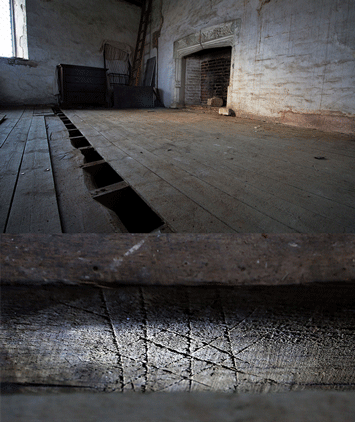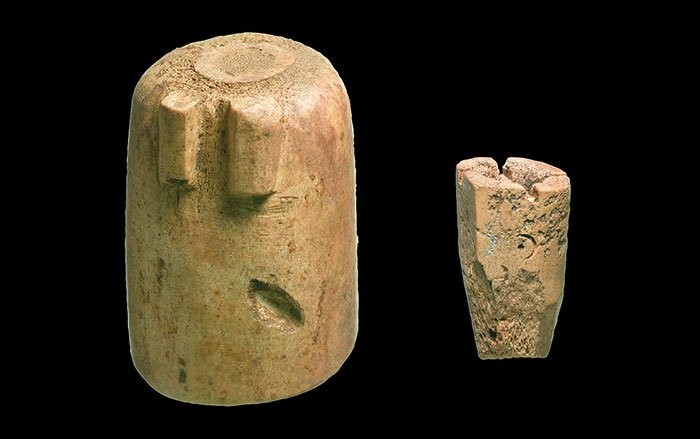
Remember, remember, the fifth of November.” In one of the United Kingdom’s largest and most historic homes, archaeologists have found a lingering memory of the paranoia and angst that followed the Gunpowder Plot of 1605, when Robert Catesby and a group of Catholic conspirators (including Guy Fawkes) attempted to blow up both houses of Parliament and kill the Protestant King James I.
Six-hundred-year-old Knole House in Kent was then owned by Thomas Sackville, Lord Treasurer. Sackville was having the home renovated to host the king himself, work that included creating the “Upper King’s Room,” where the monarch would have stayed (but never actually did). As part of a five-year project of study and conservation, researchers recently pulled up floorboards in the room and found what are known as apotropaic marks—also called “witchmarks” or “demon traps.” These crosshatch patterns had been carved into beams around the fireplace and under the floor by the craftsmen working on the room, as protection for the royal occupant from witchcraft and demonic possession. Tree-ring dating of the beams reveals that the marks were made just months after the Gunpowder Plot had been foiled.
In the hysteria that followed the plot, accusations of witchcraft and demonic activity were common, fueled in part by James’ demonization of Catholics and his interest in the supernatural. Two years earlier he passed a law imposing death for those engaging in witchcraft, and had once written a book, Daemonologie, supporting witch-hunting. According to James Wright of Museum of London Archaeology, which is working on the project, “These marks illustrate how fear governed the everyday lives of people living through the tumultuous years of the early seventeenth century.”











